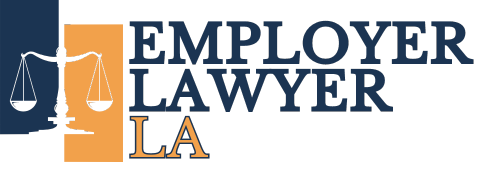- Jonathan Johansen
- News
- July 24, 2025
California Employer Lawyer Insights: Navigating the AI Takeover and the Future of Employment
In today’s rapidly evolving business landscape, the intersection of artificial intelligence (AI), automation, and labor laws is reshaping employment as we know it—especially in California. As a California employer lawyer, understanding these shifts is critical to advising businesses on compliance, risk management, and strategic workforce planning. This article explores the unfolding AI takeover in California, examining how businesses are responding to stringent labor regulations and union pressures by embracing automation. Drawing on real-world examples from industry giants like Amazon, Microsoft, Shopify, and Salesforce, we’ll delve into why AI is becoming the preferred solution for companies navigating the state’s complex legal environment in 2025.
Table of Contents
- The Current Employment Climate in California
- The AI and Automation Wave: A Business Imperative
- Why AI Is the Preferred Solution for California Employers
- Forced Evolution: The Economic and Legal Realities
- The Future of Employment in California: What to Expect
- Role of a California Employer Lawyer in the AI Era
- Frequently Asked Questions (FAQ)
- Conclusion: Embracing the AI Future with Legal Insight
The Current Employment Climate in California
California has long been known for its progressive labor laws and union influence, aiming to protect workers’ rights and ensure fair employment practices. However, this regulatory environment has also created significant challenges for employers. Over the years, laws such as AB5, predictive scheduling mandates, and stringent workplace regulations have increased operational costs and legal risks for businesses. These laws, often drafted with strong union input, intend to safeguard employee interests but have inadvertently pushed some employers into corners where human labor becomes a liability rather than an asset.
For a California employer lawyer, this presents a nuanced challenge: advising clients on how to comply with evolving laws while maintaining competitive and sustainable business operations. The rise of AI and automation technologies offers a new avenue for employers to balance these competing interests.
The AI and Automation Wave: A Business Imperative
Across sectors, companies are increasingly turning to AI and bots to replace or augment human labor. This is not simply a trend driven by technological fascination but a strategic response to the regulatory and financial pressures unique to California’s employment landscape. The tipping point, as many experts predicted, has arrived.
Consider the recent announcement by Amazon CEO Andy Jassy, revealing a significant round of layoffs coupled with plans to replace many human roles with AI-driven automation. This move wasn’t due to a shrinking market but rather a calculated decision to reduce the complexities and risks associated with human labor in California. AI systems do not require breaks, do not call in sick, do not demand benefits, and crucially, are immune to union dues and labor disputes.
Other major players are following suit:
- Salesforce has halted hiring engineers, signaling a shift towards automation over human capital investment.
- Shopify managers are now instructed to evaluate whether AI can perform a job before approving new hires.
- Duolingo has already started replacing contractors with automated systems.
- Microsoft plans mass layoffs to reallocate resources towards AI development and deployment.
These examples illustrate a broader industry trend: businesses are prioritizing efficiency and risk mitigation over expansion of their human workforce. According to a survey by the World Economic Forum, 41% of businesses worldwide intend to invest in AI bots to replace human workers. This statistic underscores the scale and rapidity of this transformation.
Why AI Is the Preferred Solution for California Employers
California’s labor laws, while designed to protect workers, have created an environment of unpredictability and risk for employers. From mandatory scheduling rules to complex wage and hour laws, the burden on businesses has grown exponentially. This regulatory landscape has led to a rising tide of lawsuits, increased compliance costs, and operational inefficiencies.
For many employers, AI and automation present a way out of this maze. Here’s why:
- Reduced Legal Risk: AI-driven systems are not subject to labor laws, union negotiations, or employment disputes, significantly lowering the risk of costly litigation.
- Operational Efficiency: Bots don’t require breaks, benefits, or sick days, enabling continuous productivity and streamlined workflows.
- Cost Savings: While initial investments in AI technology can be high, the long-term savings on wages, benefits, and legal fees are substantial.
- Scalability: Automation allows businesses to scale operations quickly without the complexities of hiring and managing large human teams.
From a California employer lawyer perspective, advising clients on how to integrate AI while remaining compliant with existing laws is becoming a critical area of practice. It requires a deep understanding of both employment regulations and emerging technologies.
Forced Evolution: The Economic and Legal Realities
The shift towards AI and automation can be seen as a form of forced evolution in the business world. Economic imperatives and legal constraints are pushing companies to innovate or face decline. The laws of economics—efficiency, cost reduction, and risk management—are prevailing over the idealistic visions of policymakers.
Despite political efforts in Sacramento to introduce more protective labor legislation, such as AB5 and predictive scheduling statutes, the market is adapting faster than lawmakers can respond. Businesses are quietly developing strategies to circumvent these regulations, with AI as the spearhead of this adaptation.
This dynamic creates a feedback loop:
- Legislators pass increasingly stringent labor laws to protect workers.
- Employers face higher costs and risks, making human labor less attractive.
- Businesses invest in AI and automation to bypass these challenges.
- The workforce shrinks as machines replace humans, reducing union influence and regulatory reach.
- Lawmakers respond with more legislation, accelerating the cycle.
For California employer lawyers, this loop raises complex questions about the future of work, labor rights, and business strategy. It also highlights the urgent need for legal frameworks that address the realities of AI integration without stifling innovation or worker protections.
The Future of Employment in California: What to Expect
As AI continues to reshape the workforce, several key developments are likely to unfold in California:
1. Increased AI Adoption Across Industries
While large corporations currently lead the AI adoption wave, small and medium-sized enterprises will soon follow. As AI technologies become more accessible and affordable, even mom-and-pop businesses will explore automation to stay competitive.
2. Legal and Regulatory Challenges
California lawmakers may attempt to regulate AI-driven employment practices, but the pace of technological change often outstrips legislative processes. New laws may emerge aimed at protecting displaced workers or regulating AI use, but enforcement will be challenging.
3. Workforce Displacement and Reskilling
Job displacement due to automation will create pressure for reskilling programs and new employment models. Employers, government agencies, and educational institutions will need to collaborate to prepare workers for a changing job market.
4. The Rise of Hybrid Workforces
Many companies will adopt hybrid models where humans and AI systems collaborate. This could create new job categories focused on managing, programming, and maintaining AI tools.
5. Shifts in Union Strategies
Unions may need to evolve by advocating for workers impacted by automation and negotiating new types of agreements that address human-AI workplace dynamics.
Role of a California Employer Lawyer in the AI Era
For legal professionals specializing in employment law in California, the AI revolution presents both challenges and opportunities. Here are critical areas where a California employer lawyer can add value:
- Compliance Advisory: Helping businesses navigate the complex regulatory landscape while integrating AI solutions.
- Risk Management: Identifying and mitigating legal risks associated with workforce automation and layoffs.
- Contract Drafting: Creating agreements that address AI use, data privacy, and employee rights.
- Litigation Support: Defending employers against claims related to wrongful termination, discrimination, or labor violations amid AI transitions.
- Policy Development: Assisting businesses in developing internal policies for ethical AI use and workforce management.
By staying informed about technological trends and legislative developments, California employer lawyers can guide clients through this period of transformation with strategic foresight and legal prudence.
Frequently Asked Questions (FAQ)
Q1: How is AI impacting employment laws in California?
AI is challenging traditional employment laws by replacing human labor with automated systems that do not fall under existing labor protections. This creates legal grey areas regarding worker classification, rights, and protections, prompting lawmakers to consider new regulations tailored to AI-driven workplaces.
Q2: Can businesses legally replace employees with AI in California?
Yes, businesses can replace employees with AI as long as they comply with existing labor laws regarding layoffs, notifications, and employee rights. However, the legal landscape is evolving, and companies should consult with a California employer lawyer to navigate potential risks and compliance issues.
Q3: What are the risks for employers using AI to replace workers?
Risks include potential lawsuits for wrongful termination, discrimination claims, compliance with notification laws, and ethical concerns. Additionally, improper use of AI can lead to bias or unfair treatment, which could result in legal challenges.
Q4: How can employees prepare for the AI-driven job market?
Employees should focus on reskilling and upskilling, particularly in areas that complement AI technologies, such as AI management, programming, and human-AI collaboration roles. Continuous learning and adaptability are crucial.
Q5: What should businesses consider before implementing AI to replace workers?
Businesses should evaluate legal compliance, ethical implications, cost-benefit analyses, and the impact on workforce morale. Engaging a California employer lawyer early in the process can help address regulatory concerns and develop sound implementation strategies.
Conclusion: Embracing the AI Future with Legal Insight
The AI takeover in California’s employment sector is not a distant dystopian scenario—it’s happening now. Companies from Amazon to Microsoft are leading the charge, driven by a need to overcome the state’s complex labor laws and union pressures. This forced evolution toward automation is reshaping the workforce landscape, creating both challenges and opportunities for businesses and workers alike.
For employers, the path forward involves balancing innovation with compliance, efficiency with ethics, and automation with human capital management. For California employer lawyers, this is a pivotal moment to provide strategic guidance that helps clients navigate the shifting sands of employment law and technology.
Understanding the realities of AI integration and its legal implications will be essential for anyone involved in California’s labor market. As this transformation accelerates, staying informed and proactive is the best way to ensure sustainable success in an AI-driven world.
Free 15-Minute Consult
Give us a CALL



